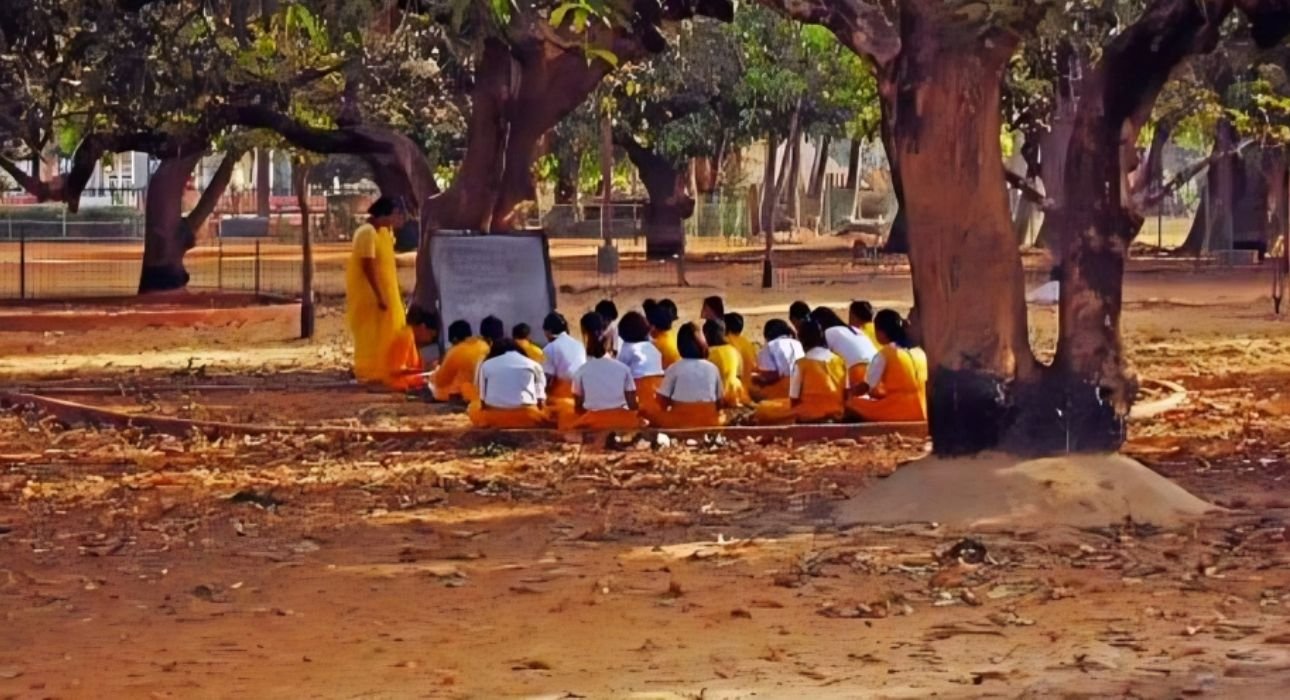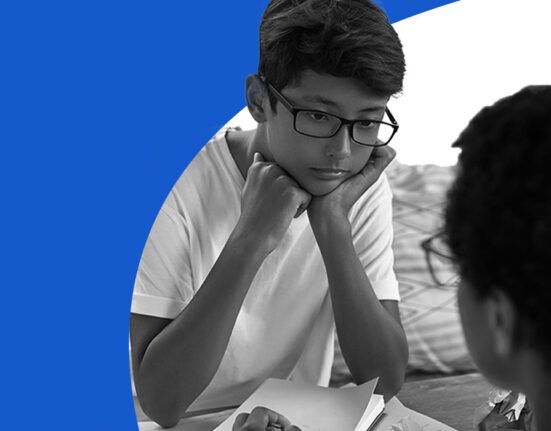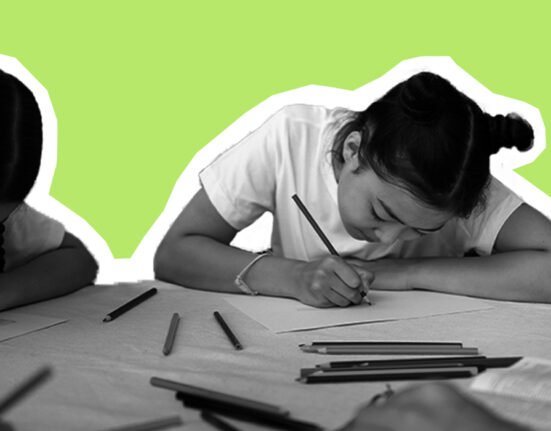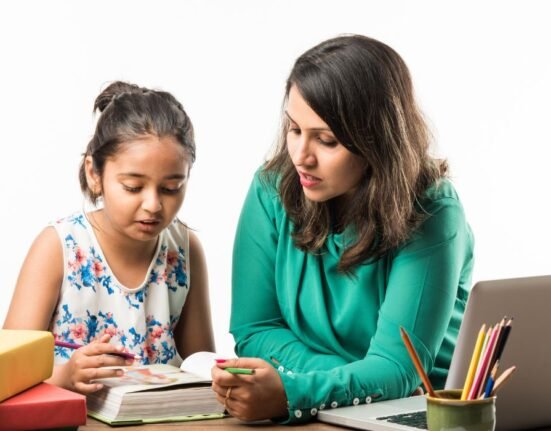The bell tolls. A group of thirty kids rush to the benches, open similar textbooks, and wait for instruction. For millions of Indians, this image represents education. A silent revolution, however, is developing behind this rhythm. Students create rainwater harvesting devices at the Poorna Learning Centre in Bengaluru. While harvesting millet in Puvidham, Tamil Nadu, students calculate crop yields. Teens from Aarohi Life Education also install solar panels to light up their campus in Uttarakhand’s forests. These are the mindful schools in India, where learning is a road toward self-awareness, empathy, and purpose rather than a competition for positions.
What are Mindful Schools, and what are their foundational values?
Mindful schools are alternatives that actively break away from the standard mould. These areas provide an important focus on awareness, presence, and overall development. Although the details differ, the fundamental idea is always the same: education should support a child’s mind, body, and spirit.
These educational institutions promote mindfulness as a concept as well as a practice. This involves decreasing the speed of instruction, offering time for quiet and self-reflection, developing attentive listening, and helping students understand their own and other people’s feelings. It’s about developing resilience, compassion, and attention, not religion or spirituality in the strict sense.
A set of core values supports mindful schools:
- Empathy Over Competition: These schools place a greater value on group learning and understanding than on student rankings.
- Curiosity Over Compliance: Instead of simply taking in knowledge, children are encouraged to inquire, investigate, and pursue their interests.
- Community Over Isolation: Social and ecological environments are important to learning. As part of their education, students interact with their surroundings and communities.
- Process Over Product: Effort, reflection, and development are given higher importance in evaluations than just final marks.
Indigenous wisdom as the foundation
India’s alternative education movement reflects a profound homecoming. Long before terms like “holistic learning” entered modern education, Rabindranath Tagore’s Shantiniketan (founded in 1901) created nature, music, and global awareness in its framework. Poetry was written in wide fields, while classes took place beneath mango trees. In the same manner, Mahatma Gandhi’s Nai Taleem placed farming and spinning khadi at the centre of education, seeing manual labour as important for moral growth. Long before neuroscience acknowledged their validity, these schools of thought criticised colonial factory schooling.
The thoughtful schools of today connect this legacy with global perspectives. Through sensory investigation, independent discovery is encouraged by Montessori principles. In order to balance creativity and intelligence, Waldorf education includes the arts in academic subjects. Students in democratic schools can rule themselves. This combination results in living laboratories where education fulfils the needs of the child rather than those of the institution.
The Mindful Classroom Experience
Step inside these innovative spaces and traditional education paradigms shift. At Delhi’s Mirambika, learning emerges organically through interdisciplinary projects. A study of water becomes chemistry through pond testing, civics through drafting civic petitions, and art through rain dance choreography. The artificial separation between subjects dissolves into an integrated understanding.
Socio-emotional development receives equal weight to academic skills. Mumbai’s Tridha Waldorf School begins each day with mindfulness practices where students observe thoughts and share reflections. This intentional cultivation of self-awareness creates the psychological safety necessary for deep learning. Research indicates that students in such environments show significantly lower anxiety levels compared to traditional school peers.
Nature serves as both a classroom and a curriculum. At Puvidham in Tamil Nadu, children measure compost piles for math, observe insect ecosystems for biology, and construct mud structures to grasp physics principles. This immersion fosters environmental literacy while developing observational skills often neglected in textbook-bound education.
Student agency manifests powerfully in democratic schools like Bangalore’s Poorna Learning Centre. Through weekly assemblies, learners debate campus policies, resolve conflicts, and co-create community norms. This lived experience of democracy cultivates responsibility and critical thinking more effectively than theoretical civics lessons.
Global Inspirations, Indian Innovations
India’s alternative education models may take inspiration from global approaches like Montessori from Italy and Forest Schools from Denmark, but they are not simple copies. Instead, these ideas are being reshaped to fit India’s own social, cultural, and environmental needs. For example, many schools have student councils that work like panchayats, where students sit together and talk openly to solve problems. These discussions do not shy away from tough topics—they encourage students to think about issues like caste and gender inequality, helping them become more aware and sensitive from a young age.
Learning in nature is also linked to local knowledge. Students don’t just study the environment—they learn how their communities have dealt with things like heavy rains, water storage, and farming for generations. This makes lessons more real and rooted in their surroundings. Mindfulness, which helps students focus and manage emotions, is taught using simple versions of Vipassana, especially adapted for children with different learning needs.
These schools show that India is not just borrowing ideas from abroad. It is taking them apart, understanding them deeply, and putting them back together in a way that works for its diverse people and realities.
Impacts and Enduring Challenges
There is growing proof that alternative education methods really work. Children who study in mindful and supportive environments often do better at solving problems, even though they take fewer traditional tests. Those who learn through hands-on projects show more creativity, especially when working on real issues in their communities. Many of these students also grow up with stronger values and make thoughtful decisions, rather than just chasing high marks.
Still, there are challenges. One major issue is teacher training. Teaching in a child-friendly, open way is very different from giving lectures—it takes time, practice, and a new mindset. Some schools, like Prakriya Green Wisdom School in Bengaluru, now offer training programs to help teachers learn these methods. Parents often worry whether these new approaches will prepare their children for exams. To ease these concerns, some schools mix project-based learning with exam coaching. The National Institute of Open Schooling even accepts work like farming as part of environmental studies.
Affordability is still a big concern, but new ideas are helping. Mumbai’s Slum Schools of Hope started short daily mindfulness sessions in government schools, and dropout rates fell by 18%. In Puducherry, AuroSagar offers quality education to fishing families at just ₹350 a month. Technology is also helping spread these ideas to more children, including those in Anganwadis.
Policy Winds and Future Horizons
India’s National Education Policy (NEP) 2020 marks a major shift in how we think about education. For the first time, the official policy supports ideas that mindful and alternative schools have been following for years. NEP 2020 encourages moving away from rote memorisation – where students simply remember facts—and instead promotes learning that builds creativity, critical thinking, and emotional awareness.
This is exactly what many alternative schools have long been doing, and now their approach is getting national support. We can already see the early impact in some states. In Delhi, government schools have introduced a special “Happiness Curriculum” that includes meditation, ethics, and emotional well-being. Tamil Nadu has announced plans to open hundreds of joyful learning preschools by 2025. Meanwhile, several educational startups are creating simple mindfulness apps that are now being used in thousands of Anganwadis (rural childcare centres), helping young children develop calmness and focus from an early age.
The NEP’s goals are starting to take shape in some exciting ways. For instance, the National Council of Educational Research and Training (NCERT) has introduced new “Holistic Progress Cards” to replace traditional report cards. These focus not just on marks but also on skills, behaviour, and overall development. This allows teachers to better understand how students grow as people, not just how they perform on tests. Chandigarh has started a weekly “no-bag day” in schools, where students leave their Heavy schoolbags at home and spend the day on creative, project-based learning.
While the progress is encouraging, there are still big challenges in making this vision work for all. One major issue is teacher training. According to the National Council for Teacher Education (NCTE), only 12% of B.Ed colleges in India currently teach mindful or child-friendly teaching methods. Most teachers are still trained in traditional ways that focus more on lectures than interaction. Infrastructure is another problem – many urban government schools have very high student-teacher ratios, sometimes with 55 students per teacher.
Conclusion: Seeds of Transformation
The most profound lesson from India’s mindful schools may be their demonstration that education can be both rigorous and humane. When children plant gardens, they learn botany through dirty fingernails. When they participate in governance, they absorb democratic principles through lived experience. And pause to breathe, they develop the emotional regulation needed for complex problem-solving.
These institutions are not escapes from reality but proving grounds for educational renewal. They remind us that true learning happens when we honour the child’s curiosity, nurture their compassion, and trust their capacity to engage meaningfully with the world. As policy shifts and parental awareness grows, the quiet revolution of mindful education may yet transform how India—and the world—educates its future citizens.
FAQs
1. What defines a “mindful school” in India?
Mindful schools prioritise holistic development over rote learning, integrating socio-emotional skills (self-awareness, empathy), nature-based activities, and self-directed projects. They blend India’s educational heritage (Tagore, Gandhi) with pedagogies like Montessori or Waldorf.
2. Are these schools legally recognised?
Yes, most operate under recognised boards:
- NIOS (National Institute of Open Schooling) for flexible curricula – IGCSE/IB for international frameworks
- State boards with customised approvals (e.g., Maharashtra’s alternative learning policy).
3. Do children from mindful schools compete academically?
Data shows comparable or superior outcomes:
- NIOS 2023 reports: 78% pass rate vs. 73% national average
- ASER 2023 notes alternative learners excel in problem-solving and critical thinking.
4. Why are they often called “elitist”?
High fees (₹1.5–3 lakhs/year) in urban private schools limit access, but initiatives like Tamil Nadu’s “joyful learning” Anganwadis (free) and Odisha’s government Waldorf partnerships are democratizing access.
5. Is there evidence that mindfulness improves learning?
NIMHANS studies (2022–2023) confirm:
- 30% reduction in student anxiety
- 22% improvement in concentration
- Enhanced creativity in project-based tasks (NCERT 2021 pilot).
6. How does NEP 2020 support such models?
The policy mandates “holistic, flexible, and stress-free” education, endorsing: – Skill-based evaluation over exams
- Vocational integration
- Arts and sports as core subjects (Sections 4.1, 4.4).
7. Can traditional schools adopt mindful practices?
Yes. Delhi’s CBSE “Happiness Curriculum” (meditation, ethics) in 1,000+ schools and PMCares’ EdTech mindfulness modules show scalable integration. Teacher training remains the critical bottleneck.
References +
Academic Journals
- Banerjee, S. (2021). Integral education at Mirambika: A phenomenological study. Contemporary Education Dialogue, 18(2), 189–215. https://doi.org/10.1177/09731849211003872
- Kumar, K. (2020). Tagore, Gandhi, and the critique of colonial education. Journal of Indian Education, 46(3), 5–21.
- Sharma, N., & Patil, S. (2023). Mindfulness practices and student anxiety reduction: Evidence from Indian alternative schools. International Journal of Educational Development, 98, 102789. https://doi.org/10.1016/j.ijedudev.2023.102789
Government & Institutional Reports
- National Council of Educational Research and Training (NCERT). (2020). National Education Policy 2020: Implementation framework. Ministry of Education, Government of India.
- National Institute of Mental Health and Neurosciences (NIMHANS). (2023). Impact of mindfulness curricula on adolescent mental health in Karnataka [Research Brief].
- Thapan, M. (Ed.). (2015). Education and society: Themes in sociology of education (2nd ed.). Oxford University Press. (Chapter 7: “Alternative Schooling in India”)
- Mehta, A. (2022). Curriculum design in Sri Aurobindo-inspired schools: A qualitative study [Doctoral dissertation, Tata Institute of Social Sciences]. Institutional Repository. http://hdl.handle.net/10603/432156
Data Sources
- National Institute of Open Schooling (NIOS). (2023). Alternative academic credits: Annual report 2022-23. Government of India.
- Tamil Nadu Education Department. (2024). Joyful Learning Initiative: Baseline assessment report. International Organizations
- UNESCO MGIEP. (2022). Reimagining education in India: Case studies of transformative pedagogies. United Nations. https://unesdoc.unesco.org/ark:/48223/pf0000383616













Leave feedback about this